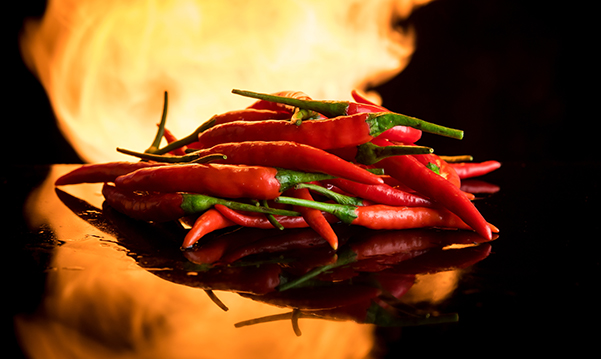You know what they say, "if you can't stand the heat, stay out of the kitchen!" But if you're looking to heat up the kitchen, look no further than sambal (pronounced zam-bahl). This Indonesian chili sauce is an integral part of cuisines and is making big waves in the United States. Sriracha is probably your go-to condiment for some Asian spice, but you should be reaching for sambal. Here's everything you need to know.
Sambal is making a name for itself in the spicy condiment debate. With minimal ingredients and a relatively straightforward process, sambal has become one of the easiest Asian condiments to keep fresh in the kitchen. With storage that can last several months when refrigerated, it's also versatile.
What exactly is Sambal?
The most basic sambal uses relatively simple ingredients: red chili peppers, vinegar, and salt. It's a chunky condiment that texture-wise resembles a relish or crushed paste as opposed to a smooth sauce like sriracha. The flavor possibilities for sambal are endless! Some versions currently on the market use shrimp paste, garlic, ginger, and even anchovies. There are hundreds of variations of Sambal, each with its own blend of seasonings—the more ingredients found in sambal, the more complex the flavor. Easily spice up noodle dishes, rice, meat, soups, and even eggs. Sambal is particularly versatile when it comes to sauces. To create a heat-packed spread for a sandwich, mix sambal with ketchup or mayonnaise. It pairs perfectly well with a variety of dishes—not all of Asian origin.
Add sambal to a burger to kick up the heat and transform your plain burger into a spicy concoction that can live front and center on your menu or serve it on the side for the perfect french fry dip. You can even mix sambal into a cocktail for a twist of heat with an added burn. Sambal pairs perfectly with a classic margarita.
Sriracha vs Sambal
It's true; the case can be made that Sriracha and Sambal are second cousins. However, as much as they have in common, they also have a few significant differences.
Let's talk about sugar. For the health-concious consumer, sriracha is a nightmare. With 1 gram of sugar per teaspoon of sriracha, it can add up quickly. Here's where sambal has the upper hand. There is zero sugar in sambal. The lack of sugar gives it a much more distinct and more robust flavor. The absence of sugar also gives sambal a distinctly different texture than Sriracha.
With a chunkier texture, sambal can make a statement that sriracha cannot. It's versatile enough to stand alone and offers a variety of unique flavors. It can also be used in a variety of dipping sauces, dressings, and can be substituted for chili peppers in an array of recipes.
Sambal is sure to be a new flavor that spicy consumers are demanding. As pallets across North America begin to demand more bold flavors, Sambal will be here to make a show stopping statement. Keep this fresh condiment on hand for an easy, and spicy twist on thousands of recipes.

